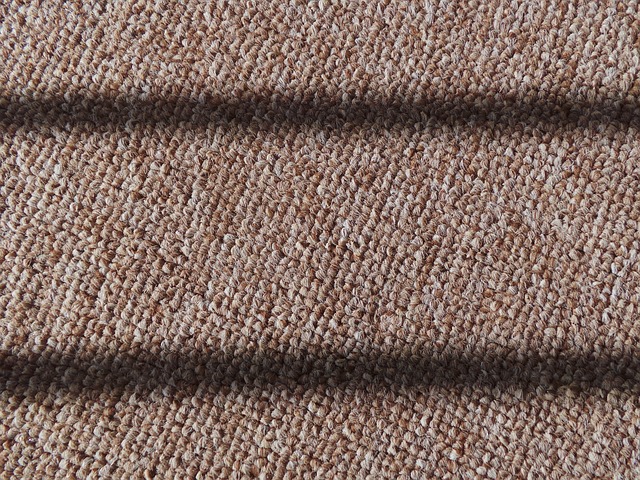Pet stains on carpets are manageable with proper knowledge. Understanding stain types and causes guides effective removal. Swift action, suitable tools (like carpet cleaners, vinegar, baking soda), and specialized products ensure clean carpets. Initial preparation includes vacuuming and testing cleaning methods. A step-by-step guide for spot cleaning includes blotting, using baking soda/cleaning powder, mild soap, or natural remedies. Professional services handle severe stains. Preventing future stains involves regular vacuuming, consistent cleaning, and pet grooming.
Pet stains on carpets can be a common and frustrating issue for homeowners. Understanding how to effectively clean these stains is essential to maintaining a fresh and hygienic living space. This comprehensive guide delves into the world of pet stain removal, offering practical tips and strategies. From identifying different stain types to utilizing natural remedies, you’ll learn effective techniques to tackle urine, feces, blood, and more. Armed with the right tools and knowledge, you can efficiently manage pet messes and keep your carpets looking their best.
Understanding Pet Stains: Types and Causes

Pet stains on carpets can be a common concern for many homeowners, but understanding the types and causes behind them is the first step in effectively removing them. These stains often result from various activities, such as your pet’s natural behaviours – like shedding, urination, or defecation – or accidental messes during playtime. Different substances require unique cleaning approaches. Urine stains, for instance, can leave a pungent odour and cause discolouration, while faecal matter may carry bacteria and parasites.
Knowing the type of stain is crucial when choosing a cleaning method. How to remove pet stains from carpet involves considering these factors: the size and age of the stain, the substance responsible, and any potential odours or health risks. Effective cleaning starts with acting swiftly, as fresh stains are easier to lift. Using suitable tools like carpet cleaners, white vinegar, baking soda, or enzymatic detergents can help break down and remove pet-related messes, leaving your carpet cleaner and ensuring a fresh environment for both you and your furry friend.
Preparing Your Carpet for Cleaning

Before diving into the cleaning process, preparing your carpet is a crucial step in effectively removing pet stains. Start by vacuuming the area to eliminate loose fur, dander, or any other debris that might hinder the cleaning solution’s absorption. This initial step ensures that the cleaner penetrates deep into the fibers and treats the stain from the root.
Additionally, testing a small, hidden area of the carpet with your chosen cleaning method is essential. Different carpets have varying compositions, so checking for colorfastness or potential damage to the fabric prevents any unwanted discoloration or fiber deterioration. By taking these preparatory measures, you’ll be better equipped to handle pet stains and restore your carpet’s cleanliness.
Essential Tools and Materials

When it comes to tackling pet stains on your carpet, the right tools and materials are essential for effective and efficient cleaning. First on your list should be a good quality vacuum cleaner with a powerful suction and a brush attachment. This will help you remove loose fur, dander, and any solid matter that might be embedded in the fibers of your carpet.
Additionally, invest in a range of stain removal products specifically designed for pet stains. Enzymatic cleaners are highly effective at breaking down organic matter, so look for those containing enzymes like amylase or proteases. Spot cleaning solutions, pre-treating sprays, and odour neutralizers will also come in handy during the cleaning process. These tools and materials will equip you to handle pet stains on your carpet with ease and restore your carpet to its cleanest state.
Step-by-Step Guide to Removing Stains

Removing pet stains from your carpet doesn’t have to be a daunting task. Here’s a step-by-step guide to help you tackle these stubborn marks effectively. Start by blotting the stain gently with a clean, dry cloth or paper towel to absorb as much of the liquid as possible. Avoid rubbing, as it can spread the stain further. Next, sprinkle a generous amount of baking soda or carpet cleaning powder onto the stained area. These natural abrasives help lift dirt and debris from the fibres. Let the powder sit for about 15-20 minutes to allow it to do its magic.
Once the powdery mixture has had time to work, vacuum thoroughly using a vacuum cleaner with a brush attachment to remove the residue. If the stain persists, mix a small amount of mild dish soap with warm water and gently apply it to the affected area. Use a clean white cloth or sponge and blot from the outer edges towards the centre to avoid pushing the stain deeper into the carpet fibres. Rinse the spot with clean, damp cloth and then blot dry with another towel.
Dealing with Specific Stain Types (Urine, Feces, Blood)

When it comes to tackling pet stains on your carpet, a swift response is key to minimizing damage and discolouration. Different stain types require specific approaches for effective removal. Here’s how to handle common issues:
For urine stains, absorption is the first step. Use an absorbent material like paper towels or a clean cloth to blot the area gently. Avoid rubbing, as it can spread the stain further. Next, mix a solution of equal parts water and white vinegar, or opt for a commercial carpet cleaning solution. Apply this mixture to the stained spot, let it sit for several minutes, then blot dry with a clean towel. For feces stains, follow similar steps but be sure to wear gloves to prevent odours and potential health risks. Rinse thoroughly after cleaning. Blood stains require a bit more care; mix a few drops of mild dishwashing liquid with cold water and gently rub the solution into the fibre using a soft-bristled brush or clean cloth. This helps break down the blood proteins, allowing for better absorption.
Natural Cleaning Solutions for Pet Owners

Many pet owners prefer natural cleaning solutions for their carpets, both for environmental and health reasons. When it comes to removing pet stains from carpeting, there are several simple and effective homemade remedies that can be just as powerful as commercial products. One popular choice is using white vinegar and water; this mixture is a versatile cleaner that can cut through urine odours and even break down the stain itself. Simply mix equal parts of white vinegar and warm water in a spray bottle, then apply it directly to the affected area. Let it sit for about 15 minutes before blotting with a clean cloth or paper towel.
Another natural cleaning solution is baking soda. It acts as a gentle abrasive, helping to lift dirt and stain particles from the carpet fibres. To use baking soda, sprinkle a generous amount over the pet stain, let it soak in for around 30 minutes, then brush it off with a soft-bristled broom or vacuum cleaner. This method is particularly effective for fresh spills. Additionally, essential oils like tea tree oil have antibacterial and antifungal properties, making them useful for odour control and sanitizing the carpet after a pet accident. Dilute a few drops of tea tree oil in a cup of warm water and use this solution to spray and clean the affected area.
When to Seek Professional Help

If pet stains have left your carpet looking less than its best, it might be time to consider professional help. While DIY methods can be effective for fresh, small stains, heavily soiled or old carpets may require the expertise of a specialized cleaning service. These professionals have access to advanced equipment and solutions designed specifically for tackling tough pet stains. They understand the delicate nature of various carpet fibers and can offer deep cleaning that goes beyond what you can achieve at home.
Professional carpet cleaners employ steam cleaning, hot water extraction, or dry cleaning methods, depending on the type of stain and carpet material. They also have specialized tools like rotary brushes, powerful vacuums, and high-pressure cleaning systems to ensure thorough cleaning without causing further damage. If your pet has caused extensive damage or if your carpet is particularly valuable or unique, consulting a professional cleaner is advisable.
Preventing Future Pet Stains

After addressing existing pet stains, preventing future ones is key in maintaining a clean carpet. Regular vacuuming is step one; it helps remove loose fur, dander, and other pet-related debris before they settle into the fibers. Using a vacuum with a high-efficiency particulate air (HEPA) filter can catch even smaller particles, reducing the likelihood of reoccurring stains.
Additionally, consider implementing a consistent cleaning routine that includes spot-treating as soon as an accident occurs. Pet-specific enzymes in cleaning solutions break down odor-causing substances at their source, preventing them from setting into the carpet fibers. Lastly, keeping your pet’s grooming routine up to date can significantly reduce shedding, a primary cause of recurring pet stains.
